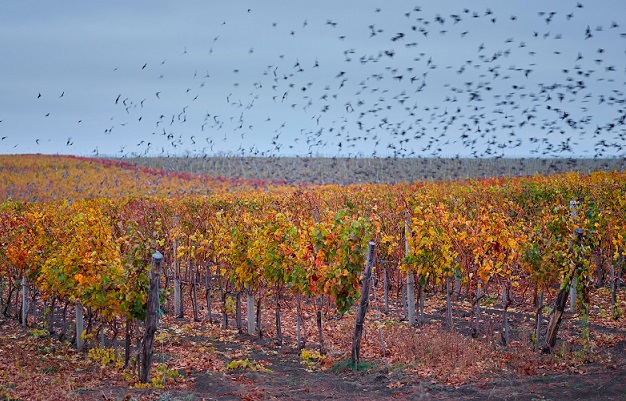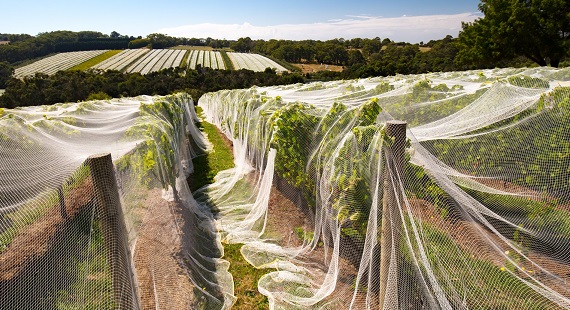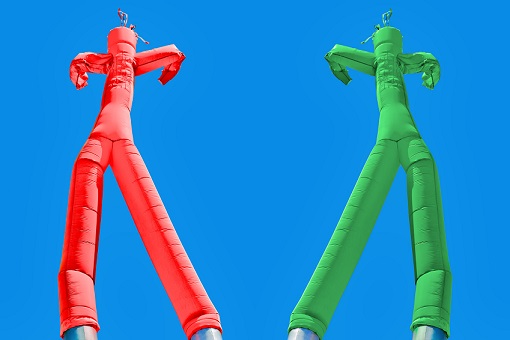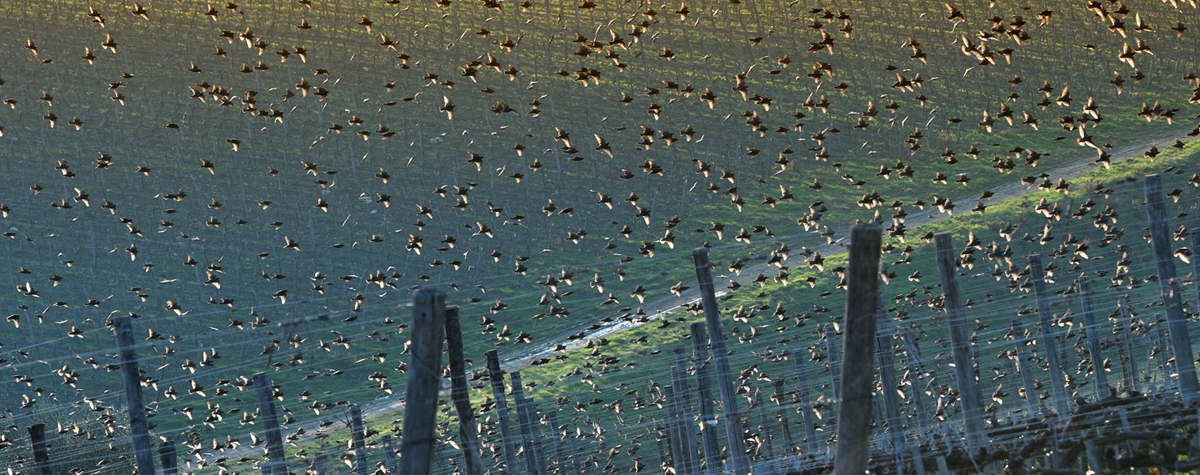Helmut Lang, the IWC Sweet Winemaker of the Year, uses more than 70km of netting to protect his grapes. “It’s necessary,” he tells Canopy.
He and several other producers have also clubbed together to employ rangers from veraison until the nets are on the vines. The rangers ride around on quad bikes, firing starting pistols whenever they spot starlings in the vineyards. Others use gas cannons and fake falcons to scare the birds.
Helmut’s brother Alois, who works for the Nationalpark, dismisses such methods. “I call this entertainment for starlings,” he says.
So what is the most effective method for protecting grapes from birds? International viticulture and management consultant James Wright looks at recent research into this massive problem.
'If life was a ‘wish concert’, we would have lots of birds in the vineyard during most of the year and then kindly ask them to go on holiday as soon as veraison starts'

Birds are a problem in terms of yield loss but also from quality issues arising from berry damage and the fungi and bacteria that then move in.
But which birds are we talking about? As the following study from a commercial vineyard in California points out, the insectivores are beneficial as they help manage pest insect populations and reduce the need for insecticides…
Conservation Evience:2014:11 p34-38:Jedlicka J A 2014:Individual study- Establishing songbird nest boxes increased avian insectivores and reduced herbivorous arthropods in a Californian vineyard, USA
Key findings: The establishment of nesting boxes in the trial vineyard led to a reduction in insect pest numbers. An insecticide spray was required in the control block but not in the trial block, the boxes were inhabited by Western Bluebirds (Sialia Mexicana) which are primarily insectivores during summer and herbivores in winter and not by the classic fruit eaters (frugivores) we want to keep out of the vineyard prior to harvest, ie. common starlings.
If life was a ‘wish concert’ (Wunschkonzert in German), we would have lots of birds in the vineyard during most of the year and then kindly ask them to go on holiday as soon as veraison starts or politely ask them to stick to eating grubs. As life is not a wish concert we need to find other ways to deter birds prior to vintage.

There are now many products on the market for bird control in vineyards including a wide range of netting, gas guns, ultrasonic alarms and distress callers, predatory bird replicas, reflective tape, eye-spot balloons, flash lights, repellents (ie. Methyl Anthranilate) and even plastic owls with rotating heads.
'Netting remains the most effective means of reducing bird damage'Netting remains the most effective means of reducing bird damage. But which colour?
Here is a study from Italy on the effects of various net colours on table grapes…
1er. Simposium Internacional de Vid:2013:24-25 January 2013:Novello V 2013:Shade nets on table grapes
Key findings: Effects on vines and grape composition varied depending on net colour, nets reduced wind speed by up to 85% and photosynthesis by up to 25%, nets could perform multiple beneficial functions, ie. protection against birds and reduction of the effects of climate change.
Studies on the effects of different coloured nets vary somewhat in terms of impact on yield and berry composition, however as a generalisation white and pearl nets either have no effect on ripening rate or advance ripening, reduce anthocyanins, titratable acidity and flavonols. Black or red nets can delay ripening, increase anthocyanins, titratable acidity and flavonols. Refer to the following trial vineyard study from California for more details…
JAFC:2017:65-49 p10693-10702:Martinez Luscher J 2017: Partial Solar Radiation Exclusion with Color Shade Nets Reduces the Degradation of Organic Acids and Flavonoids of Grape Berry (Vitis vinifera L.)
However, the cost of nets, logistical challenges, restriction on the capacity to apply late season sprays and birds becoming trapped in the nets provides plenty of motivation to investigate alternatives.
'Distress calls reduce bird damage when combined with conventional methods'Here is another study in commercial vineyards in California…
AJEV:2007:58 p135-143:Berge A 2007:Bird Control in Vineyards Using Alarm and Distress Calls
Key findings: Broadcast distress calls reduced bird damage when combined with conventional methods (reflective tape, propane cannons, pyrotechnics) from 13% to 5.7%, netting resulted in the least damage at 2.3%.
The following study from New Zealand looked at the effectiveness of two visual deterrents…
New Zealand Journal of Zoology:2008:35-3:Fukuda Y 2008:Evaluation of two visual birdscarers, the Peaceful Pyramid (R) and an eye‐spot balloon, in two vineyards
Key findings: Eye-spot balloons were initially effective but, over 24 days of monitoring, bird damage increased indicating the pest species, in this case starlings, becomes less wary of the scarer over time. Both scarers had a limited field of effectiveness.

What about inflatable tube men (pictured) or bio-pesticides such as methyl anthranilate? Here is a two-year study from Michigan, USA…
Agronomy:2018:8-12-295:Lindell C A 2018:Bird Management in Blueberries and Grapes
Key findings: Inflatable tube men showed a positive but not significant effect in blueberries. With grapes, the tube men did not show any positive effect. The application of methyl anthranilate, similarly, did not reduce bird damage.
And drones?
ASME 2012:2012:2012:Grimm B A 2012:Autonomous Unmanned Aerial Vehicle System for Controlling Pest Bird Population in Vineyards
Key findings: Drones could provide a viable alternative to rangers on quad bikes.
'Another developing option is the introduction of predator birds'Another developing option is the introduction of predator birds as evidenced by this study in commercial vineyards in Australia…
Wildlife Research:2017:Online June 2017:Peisley R K 2017:Providing perches for predatory and aggressive birds appears to reduce the negative impact of frugivorous birds in vineyards
Key findings: Providing perches for predatory birds reduced bird damage from 8.57% to 4.13%, perch design was not suitable for some specific predator species.
'Airports are increasingly converting to laser technology from drones to deter birds'As an indication of where things might go in the future, airports are increasingly converting to laser technology from drones to deter birds…
ACRP Synthesis 23:2011:Belant J L 2011:Bird Harassment, Repellent, and Deterrent Techniques for Use on and Near Airports
Key findings: Of the bird senses, ie. smell, touch, auditory reception and vision, vision is the primary sense.
James Wright is an international viticulture and management consultant and author of www.vitisynth.com and the newsletter VitiSynthesis.
Related articles from our special Illmitz-Apetlon issue
- Interview with Helmut Lang, IWC Sweet Winemaker of the Year
- Helmut Lang’s vineyard: Built to last
- Sweet wine and climate change
- An unusual approach to Chardonnay













.png)






